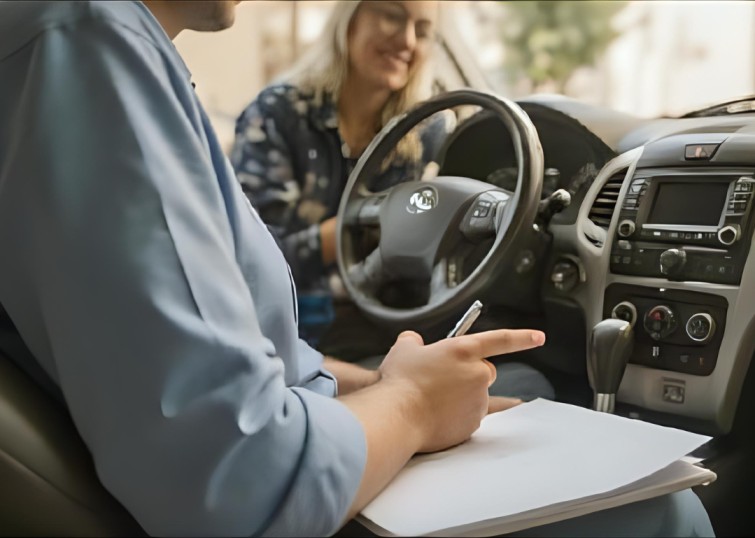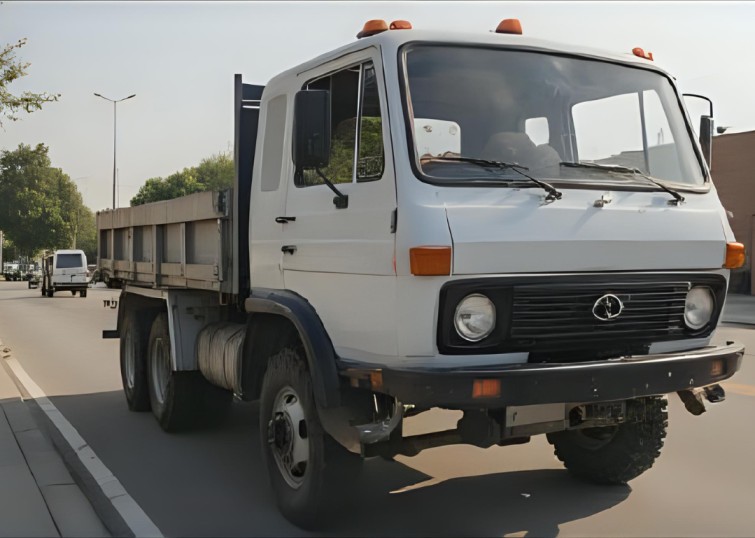TL;DR
In the event of a truck accident leading to a chain reaction, prioritize safety by moving to a safe location, call emergency services, document the scene, and seek legal assistance. Ensure all parties receive necessary medical attention and gather evidence for insurance and legal purposes.
Key Highlights
- Ensure Safety: Move away from traffic, turn on hazard lights, and use warning signs.
- Contact Authorities: Call 911 immediately to report the accident and request medical help.
- Document the Scene: Take photos, note the sequence of events, and gather witness information.
- Exchange Information: Share contact and insurance details with all involved parties.
- Seek Medical Attention: Even if injuries seem minor, get checked by a healthcare professional.
- Consult Legal Experts: Reach out to an attorney to understand your rights and navigate insurance claims.

Every year, thousands of truck accidents disrupt lives and cause extensive damage on highways across the United States. These incidents often involve large vehicles, making collisions particularly severe and prone to creating chain reactions involving multiple vehicles. Statistics reveal that truck-related accidents account for a significant percentage of highway incidents, highlighting the need for heightened awareness and preparedness among drivers.
In Georgia, for instance, the Department of Transportation reports a steady number of truck accidents annually, many of which escalate into multi-vehicle collisions. Factors such as driver fatigue, mechanical failures, and adverse weather conditions contribute to these incidents. Understanding the dynamics of truck accidents and the subsequent chain reactions is crucial for minimizing harm and ensuring efficient response.
When a truck accident triggers a series of crashes, the situation becomes more complex and hazardous. Knowing the immediate steps to take can make a critical difference in outcomes. From ensuring personal safety to navigating legal processes, being informed empowers individuals to handle such emergencies effectively and safeguard their well-being.
What is Chain Reaction in an Accident?
A chain reaction accident refers to a multi-vehicle collision where one crash triggers a series of subsequent crashes. These accidents typically occur when an initial impact causes other drivers to react suddenly—often leading to additional crashes due to limited reaction time, poor road conditions, or heavy traffic.
Common Causes of Chain Reaction Accidents
- Tailgating – Vehicles following too closely cannot stop in time after an initial crash.
- Poor Weather Conditions – Rain, fog, or ice reduce visibility and traction, increasing the chances of a pileup.
- Distracted Driving – Drivers not paying attention may fail to stop or react appropriately.
- Speeding – High-speed collisions create greater force, making secondary crashes more likely.
- Sudden Braking – Abrupt stops in heavy traffic can lead to rear-end collisions that cascade into a multi-car accident.
Liability in a Chain Reaction Crash
Determining fault in a chain reaction accident can be complicated because multiple drivers may share responsibility. Investigators consider factors like:
- Who initiated the first collision.
- Whether other drivers were following too closely.
- If any driver was distracted, speeding, or impaired.
If you or a loved one were involved in a chain reaction accident, speaking with a personal injury lawyer can help you determine liability and recover damages.
Immediate Actions to Take If a Truck Accident Causes Chain Reaction
Ensure Personal Safety and the Safety of Others
The first priority after a truck accident is to ensure the safety of everyone involved. If possible, move your vehicle out of the flow of traffic to prevent further collisions. Turn on your hazard lights to alert other drivers and use warning triangles or cones if available. If anyone is injured, avoid moving them unless there’s an immediate danger, such as a fire or risk of explosion.
Call Emergency Services Promptly
Contact 911 immediately to report the accident. Provide clear and accurate information about the location, number of vehicles involved, and the severity of injuries. The quicker emergency responders arrive, the better the chances of saving lives and reducing the impact of the accident.
Document the Accident Scene
Gather as much information as possible at the scene. Take photographs of all vehicles involved, including their positions, damages, and any skid marks on the road. Note the time, date, weather conditions, and visibility. If there are any traffic signals or signs nearby, capture their status during the accident.
Collect Information from All Parties
Exchange contact and insurance information with the truck driver and any other drivers involved in the chain reaction. This includes names, phone numbers, addresses, insurance policy details, and vehicle registration information. Additionally, collect contact information from any witnesses who can provide statements about the accident.
Seek Medical Attention Immediately
Even if you feel fine, it’s essential to get a medical evaluation after a truck accident. Some injuries may not be immediately apparent, and timely medical intervention can prevent complications. Inform the medical professionals about the accident and any symptoms you’re experiencing.
Consult a Truck Accident Attorney
An Atlanta truck accident attorney can help you pursue maximum compensation with an insurance company or represent you in court. Their legal expertise ensures insurance adjusters do not take advantage of the law to reduce your claim.
Notify Your Insurance Company
Report the accident to your insurance provider as soon as possible. Provide them with all the documentation and information you’ve collected. They will guide you through the claims process and help you understand your coverage and options for compensation.
Understanding the Dynamics of Chain Reaction Accidents
How Chain Reactions Occur in Truck Accidents
Chain reaction accidents involve multiple vehicles colliding in quick succession, often due to the initial impact disrupting the flow of traffic. Trucks, due to their size and speed, can cause significant disturbances that ripple through surrounding traffic. For example, a sudden stop or loss of control by a truck can lead to rear-end collisions, side swipes, and multi-car pile-ups.
Common Causes Contributing to Chain Reactions
Several factors can lead to a truck accident resulting in a chain reaction:
- Driver Fatigue: Long hours behind the wheel can lead to drowsiness and decreased reaction times.
- Distracted Driving: Using mobile devices, eating, or other distractions can divert attention from the road.
- Mechanical Failures: Brake failures, tire blowouts, or engine problems can cause trucks to lose control suddenly.
- Speeding: Excessive speed reduces the time drivers have to react to unexpected situations.
- Poor Road Conditions: Wet, icy, or uneven roads can increase the likelihood of accidents.
The Impact of Truck Size and Weight
Trucks are significantly larger and heavier than passenger vehicles, which affects how they behave in an accident. Their size makes them less maneuverable, and their weight means they require longer distances to stop. In the event of a collision, trucks can easily push other vehicles, exacerbating the severity and extent of a chain reaction.
Legal and Insurance Considerations
Understanding Liability in Multi-Vehicle Accidents
Determining liability in chain reaction accidents can be complex. It involves assessing the actions of each driver involved, including the truck driver and those of the other vehicles. Factors such as traffic laws, driver negligence, and vehicle maintenance play crucial roles in establishing fault. In some cases, multiple parties may share responsibility for the accident.
Navigating Insurance Claims
Filing insurance claims after a truck accident requires careful documentation and communication with your insurance provider. Provide all the necessary information, including police reports, medical records, and photographs of the accident scene. Be honest and thorough in your statements to avoid delays or disputes in your claim.
When to Seek Legal Assistance
If the accident results in significant injuries, property damage, or disputes over liability, consulting with a legal professional is advisable. An attorney specializing in truck accidents can help navigate the complexities of the legal system, negotiate with insurance companies, and ensure you receive fair compensation for your losses.
Georgia-Specific Laws and Regulations
In Georgia, specific laws govern truck accidents and chain reactions. For example, Georgia Code § 40-6-383 imposes strict liability on commercial truck drivers for accidents caused by their negligence. Additionally, Georgia follows a comparative negligence system, meaning damages can be apportioned based on each party’s degree of fault.
Preventative Measures to Reduce Chain Reaction Accidents
Importance of Regular Truck Maintenance
Regular maintenance of trucks is essential to prevent mechanical failures that can lead to accidents. This includes routine checks of brakes, tires, lights, and engine components. Proper maintenance ensures that trucks remain safe to operate on busy roads.
Driver Training and Education Programs
Comprehensive training programs for truck drivers can significantly reduce the risk of accidents. Education on defensive driving, fatigue management, and adherence to traffic laws equips drivers with the skills needed to handle challenging situations on the road.
Implementing Advanced Safety Technologies
Modern trucks are equipped with advanced safety features such as automatic braking systems, lane departure warnings, and stability control. These technologies can prevent accidents by alerting drivers to potential hazards and assisting in maintaining control during unexpected events.
Road Infrastructure Improvements
Enhancing road infrastructure, including better signage, clearer markings, and improved lighting, can help prevent accidents. Designing roads to accommodate large vehicles like trucks ensures smoother traffic flow and reduces the likelihood of chain reactions.
Conclusion
Experiencing a truck accident that triggers a chain reaction can be a distressing and overwhelming event. By staying calm and following the appropriate steps—ensuring safety, contacting authorities, documenting the scene, and seeking medical and legal assistance—you can effectively manage the immediate aftermath and protect your interests. Understanding the complexities of such accidents, including the legal and insurance implications, empowers you to navigate the situation with confidence and resilience.
Taking proactive measures, such as regular vehicle maintenance, proper driver training, and staying informed about road safety, can significantly reduce the likelihood of being involved in a chain reaction accident. Remember that support is available, from emergency services to legal professionals, to help you through every stage of recovery and resolution. Acting swiftly and thoughtfully not only safeguards your well-being but also contributes to safer roads for everyone.
If you’ve been involved in a truck accident that caused a chain reaction, don’t hesitate to reach out for professional assistance. Completing a free case evaluation can provide you with the guidance and support needed to move forward confidently.



